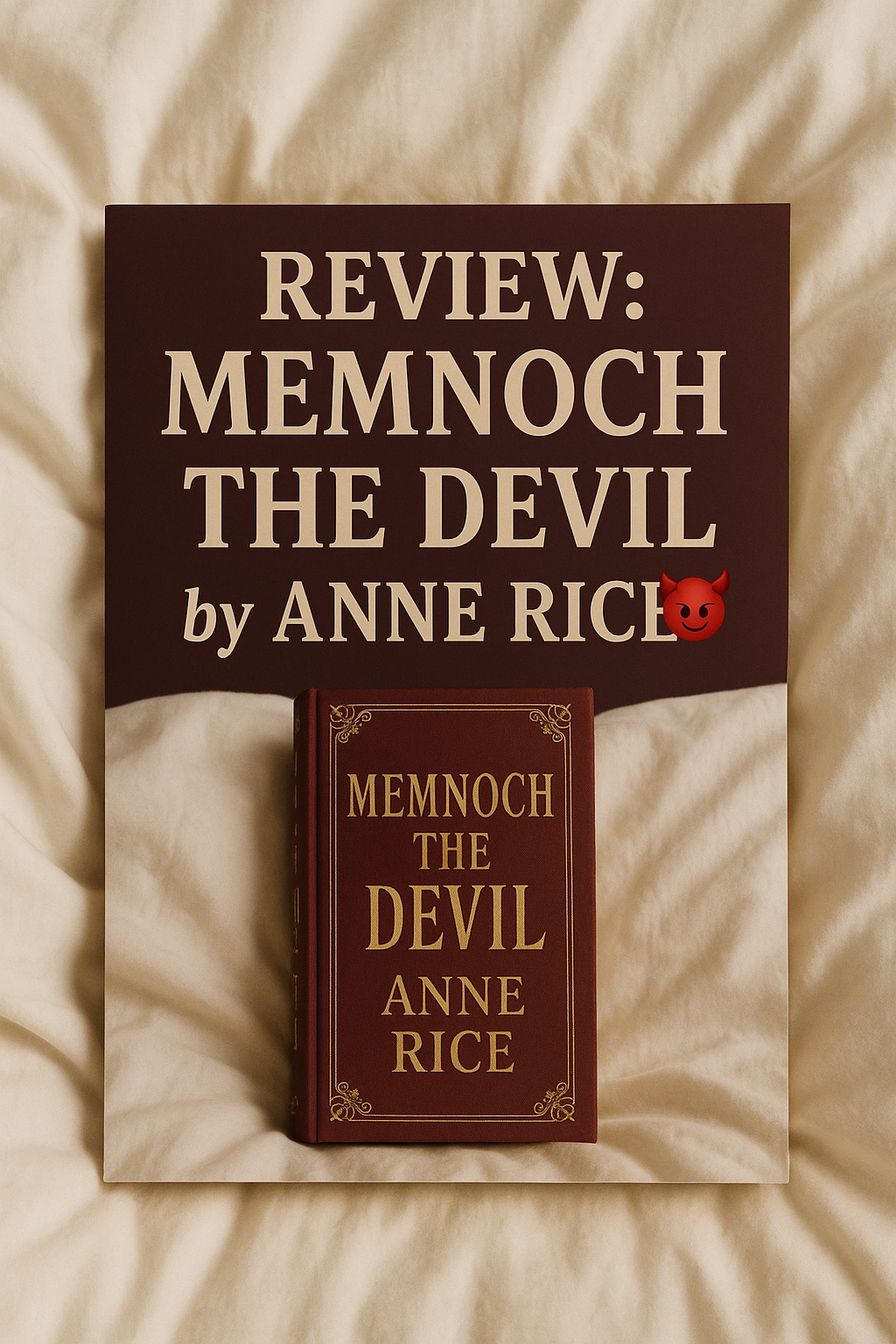
Anne Rice’s Memnoch the Devil (1995) is one of the most daring and controversial books in The Vampire Chronicles. With this fifth installment, Rice takes Lestat beyond the realm of the undead and throws him into a metaphysical confrontation with Heaven and Hell themselves. It’s a story about faith, rebellion, and the eternal struggle between good and evil—told through the eyes of a vampire who’s never been afraid to question everything.
Memnoch el Diablo (1995) de Anne Rice es uno de los libros más atrevidos y controvertidos de Las Crónicas Vampíricas. Con esta quinta entrega, Rice lleva a Lestat más allá del reino de los no muertos y lo lanza a una confrontación metafísica con el Cielo y el Infierno. Es una historia sobre la fe, la rebelión y la lucha eterna entre el bien y el mal, contada a través de los ojos de un vampiro que nunca ha temido cuestionarlo todo.
📖 Story Summary
The novel begins with Lestat being stalked by a mysterious presence—one that eventually reveals itself to be Memnoch, the Devil. Memnoch claims to be God’s true servant, misunderstood and vilified, and invites Lestat on a journey through Heaven, Hell, and the origins of creation itself. What follows is a philosophical and emotional odyssey that forces Lestat to confront the meaning of suffering, redemption, and divine justice.
La novela comienza con Lestat siendo perseguido por una presencia misteriosa—que finalmente se revela como Memnoch, el Diablo. Memnoch afirma ser el verdadero siervo de Dios, incomprendido y vilipendiado, y le invita a Lestat a un viaje por el Cielo, el Infierno y los orígenes mismos de la creación. Lo que sigue es una odisea filosófica y emocional que obliga a Lestat a confrontar el significado del sufrimiento, la redención y la justicia divina.
🌙 Themes and Impressions
Memnoch the Devil isn’t just a vampire novel—it’s a theological exploration disguised as gothic fiction. Rice dives into questions that most horror authors never dare to touch: What if the Devil isn’t evil? What if damnation is just another perspective? Through Lestat’s confusion and awe, the reader experiences both the terror and beauty of the divine.
Memnoch el Diablo no es simplemente una novela de vampiros: es una exploración teológica disfrazada de ficción gótica. Rice se sumerge en preguntas que la mayoría de los autores de terror nunca se atreven a tocar: ¿y si el Diablo no fuera malvado? ¿Y si la condenación fuera solo otra perspectiva? A través de la confusión y el asombro de Lestat, el lector experimenta tanto el terror como la belleza de lo divino.
The book is dense, poetic, and provocative. Some readers found it unsettling or blasphemous; others consider it one of Rice’s masterpieces. What’s undeniable is her ambition—she transforms the vampire myth into a meditation on the universe itself, balancing theological speculation with the raw emotion of Lestat’s journey.
El libro es denso, poético y provocador. Algunos lectores lo encontraron perturbador o blasfemo; otros lo consideran una de las obras maestras de Rice. Lo que es innegable es su ambición: transforma el mito del vampiro en una meditación sobre el universo mismo, equilibrando la especulación teológica con la emoción cruda del viaje de Lestat.
🖤 Final Thoughts
Memnoch the Devil is not for everyone—but for those willing to follow Lestat into Heaven and Hell, it’s a haunting and unforgettable experience. It’s Anne Rice at her most spiritual and daring, blurring the boundaries between religion, philosophy, and gothic fiction.
Memnoch el Diablo no es para todos—pero para quienes estén dispuestos a seguir a Lestat al Cielo y al Infierno, es una experiencia inquietante e inolvidable. Es Anne Rice en su versión más espiritual y arriesgada, difuminando las fronteras entre religión, filosofía y ficción gótica.
If you were Lestat, would you dare to question Heaven itself? Or would you turn away from the truth that Memnoch offers?
Si fueras Lestat, ¿te atreverías a cuestionar al mismo Cielo? ¿O te alejarías de la verdad que Memnoch ofrece?